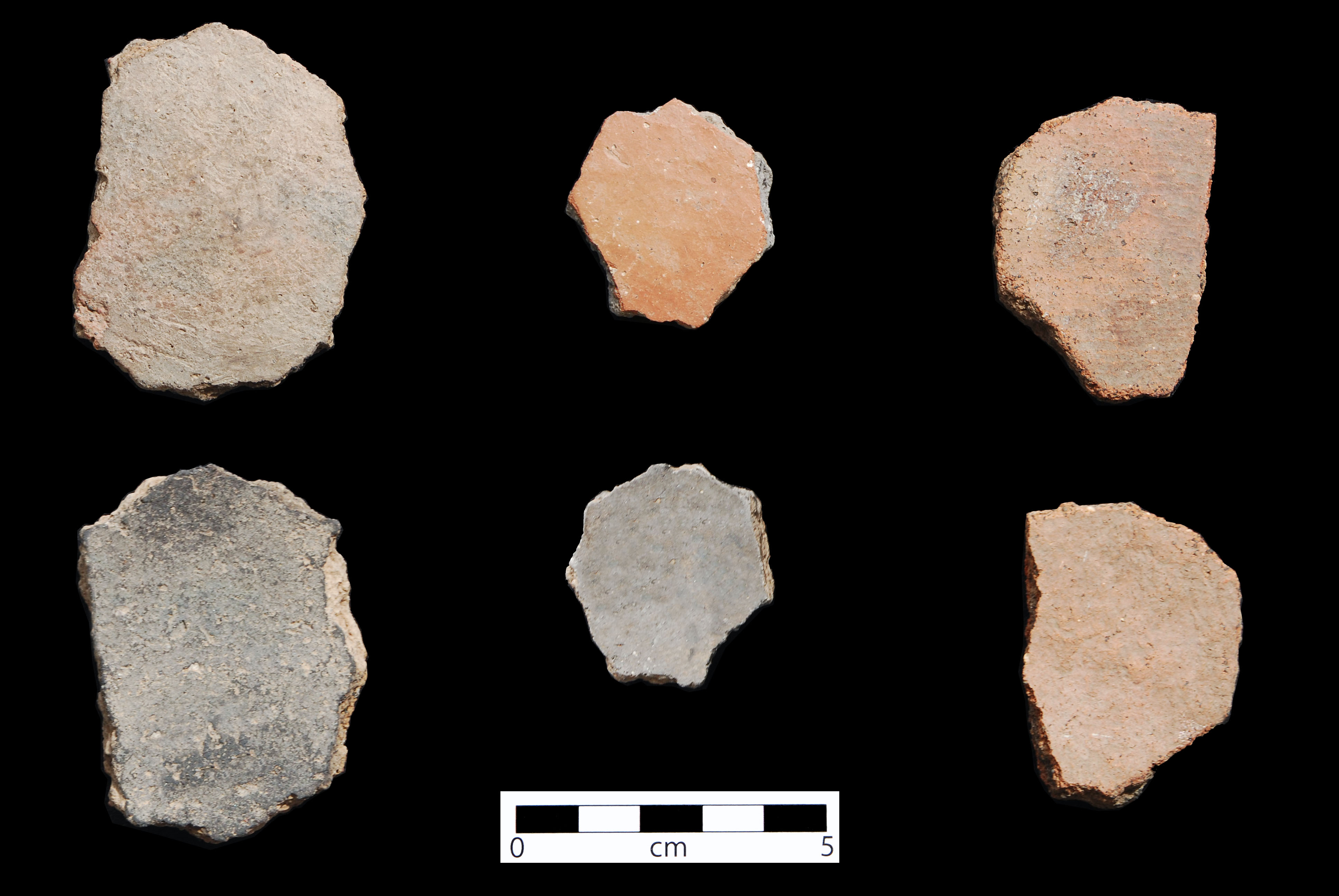Youngs Brown is a type of Alameda Brown Ware found in the lower Walnut Creek drainage in the San Francisco Mountain region of northern Arizona.
Archaeological Culture: Sinagua
Date Range: A.D. 1000-1150.
Construction: By paddle and anvil.
Firing: In an oxidizing atmosphere.
Core Color: Gray to dark brown; usually well-fired.
Carbon Streak: Usually absent.
Temper: Crushed volcanic tuff and basaltic ash in about equal amounts.
Surface Finish: Outside bowls and jars smoothed, compacted, never slipped, and wiping marks prominent, anvil marks inconspicuous.
Surface Color: Buff orange to dark brown, sometimes gray to black. Interiors of bowls smudged.
Forms: Jars, bowls, very rare pitcher, Gila shoulder occurs.
Vessel Thickness: 4.5 to 5.5 mm, average 5.0 mm (bowls); 4 to 6 mm; average 5 mm (jars).
Decoration: None.
Comparisons: Similar in every way to Winona Brown, but contains a variable amount (about 50%) of Sunset volcanic ash. Youngs Brown therefore is an intergrade and not very important as an indicator of time.
Compiled from the following sources:
Colton, Harold. (1958) Pottery Types of the Southwest. Museum of Northern Arizona Ceramic Series No. 3D. Flagstaff, Arizona.
Compiled by:
April Peters, Northern Arizona University Anthropology Laboratories.

